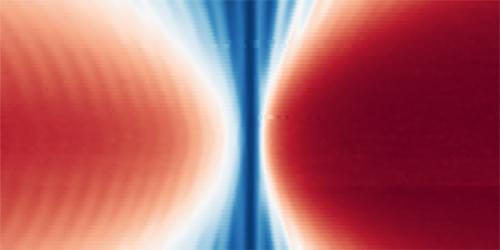The first full-size prototype of Manta Ray, an advanced uncrewed underwater vehicle (UUV) produced by the Defense Advanced Research Projects Agency (DARPA), has been revealed in new photos.
The images were released on Monday by Northrup Grumman, one of two prime contractors DARPA selected in late 2021 to produce unique full-scale demonstration vehicles for the program.
Manta Ray is an extra-large glider UUV designed to carry out long-range and long-duration missions in undersea environments while limiting the need for human logistics on-site. The next-generation UUV will demonstrate a range of technologies that will enable greater energy efficiency and propulsion capabilities, as well as increased payload capacity.









